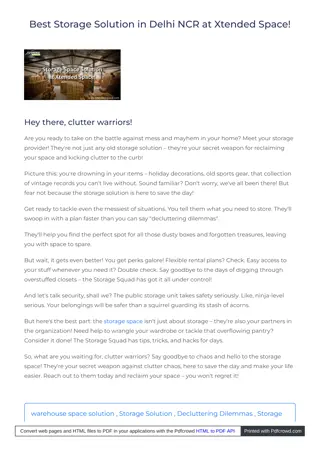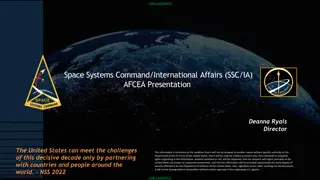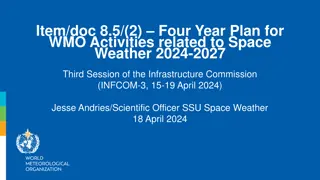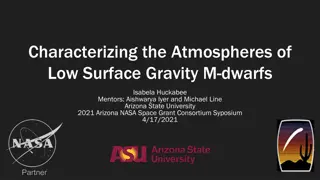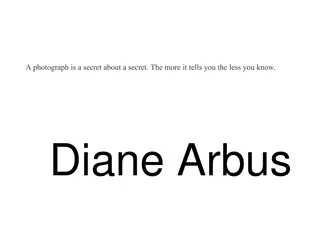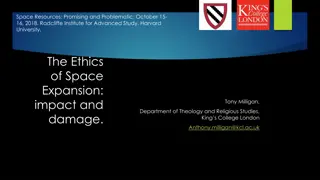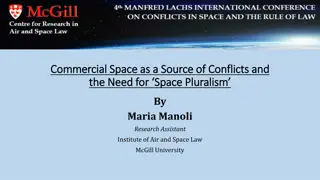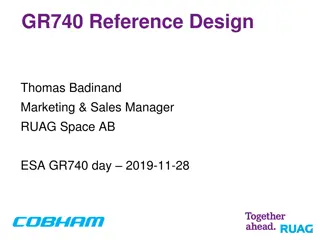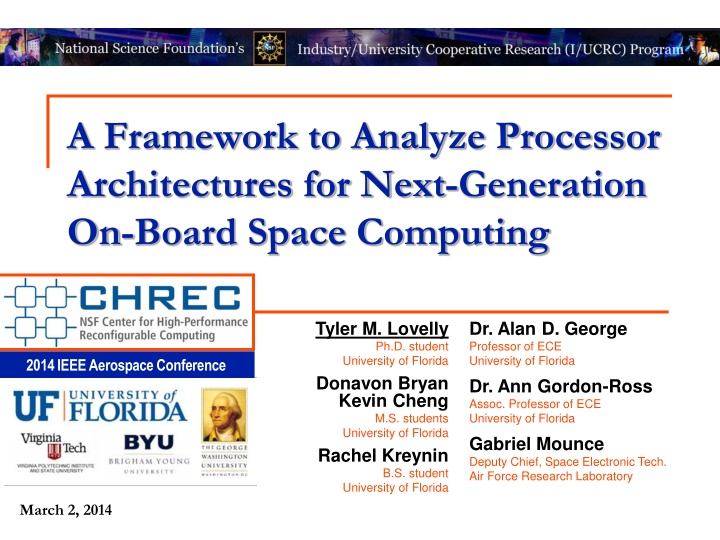
Analyzing Processor Architectures for Next-Generation Space Computing
Explore a framework developed to analyze processor architectures for on-board space computing, addressing challenges in power, reliability, and performance. The study delves into computational dwarfs, device metrics, and benchmarking to enhance architectural capabilities for key computations.
Download Presentation

Please find below an Image/Link to download the presentation.
The content on the website is provided AS IS for your information and personal use only. It may not be sold, licensed, or shared on other websites without obtaining consent from the author. If you encounter any issues during the download, it is possible that the publisher has removed the file from their server.
You are allowed to download the files provided on this website for personal or commercial use, subject to the condition that they are used lawfully. All files are the property of their respective owners.
The content on the website is provided AS IS for your information and personal use only. It may not be sold, licensed, or shared on other websites without obtaining consent from the author.
E N D
Presentation Transcript
A Framework to Analyze Processor Architectures for Next-Generation On-Board Space Computing Tyler M. Lovelly Ph.D. student University of Florida Donavon Bryan Kevin Cheng M.S. students University of Florida Rachel Kreynin Dr. Alan D. George Professor of ECE University of Florida Dr. Ann Gordon-Ross Assoc. Professor of ECE University of Florida Gabriel Mounce Deputy Chief, Space Electronic Tech. Air Force Research Laboratory 2014 IEEE Aerospace Conference B.S. student University of Florida March 2, 2014
Introduction Space computing presents unique challenges Harsh and inaccessible operating environment Stringent constraints on power, reliability, programmability Limitations for on-board performance and mission capabilities Increasing need for high-performance on-board computing Demand for real-time sensor and autonomous processing Limited communication bandwidth to ground stations Existing rad-hard processors cannot meet performance requirements Typically several generations behind commercial processors Based on architectures not specifically designed for space computing Framework created to analyze processor architectures for next-generation on-board space computing Study wide range of architectures based on performance and power Gain insights into architectural capabilities for key computations 2
Framework Space-computing taxonomy Broadly define and classify space- computing domain Simplify into key computations Device metrics Analyze wide range of architectures Based on theoretical device capabilities Performance & power Device benchmarking Further analyze promising architectures based on key computations Parallelization across processor cores and reconfigurable fabrics 3
Background and Related Research Computational dwarfs Defined by UCB as an algorithmic method that captures a pattern of computation and communication [1] Used to characterize applications based on key computational patterns Concept can be adapted and applied to any domain of computing Device metrics Computational Density (CD)measures theoretical device performance; scaled by power for CD per Watt (CD/W) [2] Device benchmarking Based on key computations for applications under consideration Provides greater insight into architectures, algorithms, optimizations f = operating frequency N = # of execution units CPI = cycles per instruction n = # of execution unit types [1] K. Asanovic et al., "The Landscape of Parallel Computing Research: A View from Berkeley, Technical Report No. University of California, Berkeley, Dec 18 2006 [2] J. Richardson et al., Comparative Analysis of HPC and Accelerator Devices: Computation, Memory, I/O, and Power, Proc. of High-Performance Reconfigurable Computing Technology and Applications Workshop (HPRCTA), at SC 10, New Orleans, LA, Nov 14 2010 UCB/EECS-2006-183, 4
Space-Computing Taxonomy Space dwarfs Studied common and critical space apps and missions Established computational dwarfs for space computing Space benchmarks Key computations selected for space benchmark suite Example: satellite mission Critical application Hyper-spectral imaging Corresponding dwarf Image processing Key computations Matrix multiplication QR decomposition 5
Device Metrics Analysis Initial analysis on broad and diverse set of architectures GPUs give high CD, but too high power for many space missions Closest comm. arch. to rad-hard Boeing MAESTRO Hybrid architectures analyzed in isolated or combined fashion Existing rad-hard outperformed by comm. architectures Commercial counterpart of rad- hard Virtex-5QV FPGA provides most CD & CD/W to hybrid device No DPFP support for high-precision space apps Intel Atom S120 has power-efficient advantage for space 6
Device Benchmarking Analysis Developed space benchmarks for several targeted architectures Rad-hard CPU Based on PowerPC750FX Similar arch to BAE Systems RAD750 Commercial CPUs and DSP Generated initial performance results based on serial operation Rad-hard technology outperformed by commercial architectures Even when commercial architectures are limited to single-core operation Supports device metrics data for rad-hard vs. commercial architectures Execution time increases with data precision for compute- intensive benchmark Data type & precision less important for memory- intensive benchmark Best performing architecture varies based on benchmark, data type & precision 7
Device Benchmarking Analysis Parallel benchmarking on multi/many-core architectures OpenMP shared-memory parallelization strategy Space benchmarks parallelizable across processor cores Eventual tipping points when overhead surpasses speedup FPGA benchmarking Parallel-pipelined hardware datapath Alleviate performance bottlenecks for critical space applications Optimal # cores based on benchmark, data type & precision, problem size More optimization needed to achieve significant speedup Performance Data precision Resource utilization Not enough cores to reach tipping point in parallelization FF LUT 32 (1%) 43 (1%) DSP 17 (7%) 17 (7%) 35 (15%) 5920085 43 (19%) 5920085 cyles frequency time (s) 5920085 500 MHz 5920085 500 MHz 500 MHz 300 MHz 300 MHz Int8 Int16 Int32 SPFP DPFP 160 (1%) 320 (1%) 928 (1%) 4010 (3%) 12706 (11%) 8315 (15%) 123 (55%) 5920085 0.0118 0.0118 0.0118 0.0197 0.0197 210 (1%) 2735 (5%) FPGA resource usage grows with data precision Significant resources not required, even for highest precision 8
Conclusions and Future Research Framework created to analyze processor architectures for next-generation on-board space computing Space-computing taxonomy Established set of computational dwarfs for space Key computations selected for space benchmarking Device metrics analysis Wide range of architectures analyzed with CD and CD/W metrics Initial insights into performance and power efficiency for various architectures Device benchmarking analysis Conducted serial, parallel, and reconfigurable benchmarking Further supports metrics data that rad-hard tech becoming outdated Space apps parallelizable across processor cores and reconfig. fabrics Expand results with new devices and benchmarks Multi/many-core CPUs and DSPs; comm. and rad-hard Leverage established libraries and architecture-specific optimizations 9

![Read⚡ebook✔[PDF] Linking the Space Shuttle and Space Stations: Early Docking Te](/thumb/21519/read-ebook-pdf-linking-the-space-shuttle-and-space-stations-early-docking-te.jpg)
![READ⚡[PDF]✔ Emerging Space Powers: The New Space Programs of Asia, the Middle Ea](/thumb/21554/read-pdf-emerging-space-powers-the-new-space-programs-of-asia-the-middle-ea.jpg)
